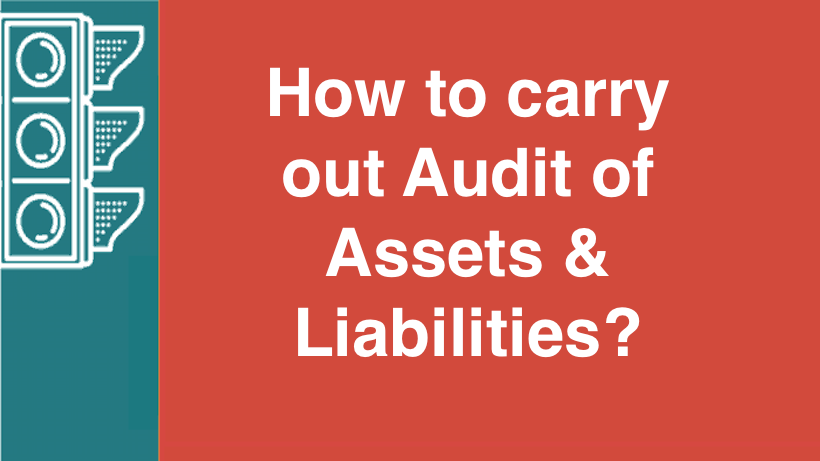How to carry out Audit of Assets and Liabilities? – When we sit to study audit, our basic concepts relating to how to carry out the various audits should be very clear. The most important aspects while auditing the financial statements of any enterprise is the correct analysis of its assets and liabilities. So, here we will do a detailed study of how the assets and Liabilities should be audited.
Audit of Assets –
Let us have a look on the procedure to be followed in the case of Audit of Fixed Assets. The following aspects should be deeply verified.
- Internal Controls: The control over expenditure on fixed assets; self constructed assets, accountability and utilization controls and information controls.
- Proper Verification of Records: Records relating to acquisition of new fixed assets, improvements to existing ones, self – constructed assets, capital work-in-progress, scrutiny of expense accounts, audit procedures in respect of sold, destroyed or scrapped assets should be checked. Procedures to identify unrecorded transactions in respect of such assets should also be undertaken.
- Physical verification: Factors such as The Management’s responsibility in respect of physical verification, factors to be considered in assessing the appropriateness as well as reasonableness of the physical verification conducted by the management should be re confirmed by the Auditor.
- Valuation and Disclosure: Ensuring compliance with the generally accepted basics of accounting, calculation of depreciation, revaluation of fixed assets and using the work of experts in the case of revaluation etc., assets purchased for a consolidated price, joint ownership of assets.
On the same line, Audit of other Assets can be carried out.
Now, let us have a look on the audit of Liabilities.
Audit of Liabilities –
Advertisement
The following is an outline of the relevant areas to be verified by the Auditors.
- Internal Control Evaluation in Respect of Loans and Borrowings: The following should be thoroughly reviewed: Credit limits/ borrowing powers and limits, authority, terms of borrowing, compliance with statutory requirements, variation in terms, security against loans, documentation, reporting of non compliance, balance confirmations, foreign exchange loans.
- Internal Control Evaluation in Respect of Trade Creditors, Current Liabilities, Provisions, Trade Deposits in addition to those above, payment on duplicate invoices, schedule of creditors, adjustments to creditors, accounts to be authorized, cut off procedures.
- Examination of Records of Loans and Borrowings: The validity and accuracy, agreement with the statements from creditors and loaners, loan agreements, change in the value of security, deferred payment credits should be checked.
- Examination of Records of Trade Creditors and Other Current Liabilities: The cut off procedures, control accounts, documentary evidence, important aspects to be seen in the schedule of creditors etc., year end transactions, subsequent events should be understood and rechecked.
- Examination of Records of Provisions: The meaning of provisions, objectives of audit of provisions, provision for taxes and duties, provision for gratuity, provision for bonus, provision for dividend, other provisions should be verified by the Auditor.
- Examination of Records of Contingent Liabilities: The meaning, general procedures for verifying contingencies should be identified and assured.
- Also, Confirmation of Accounts should be called upon from Creditors and Lenders in order to cross check the closing balance for both the parties.
Must Read

